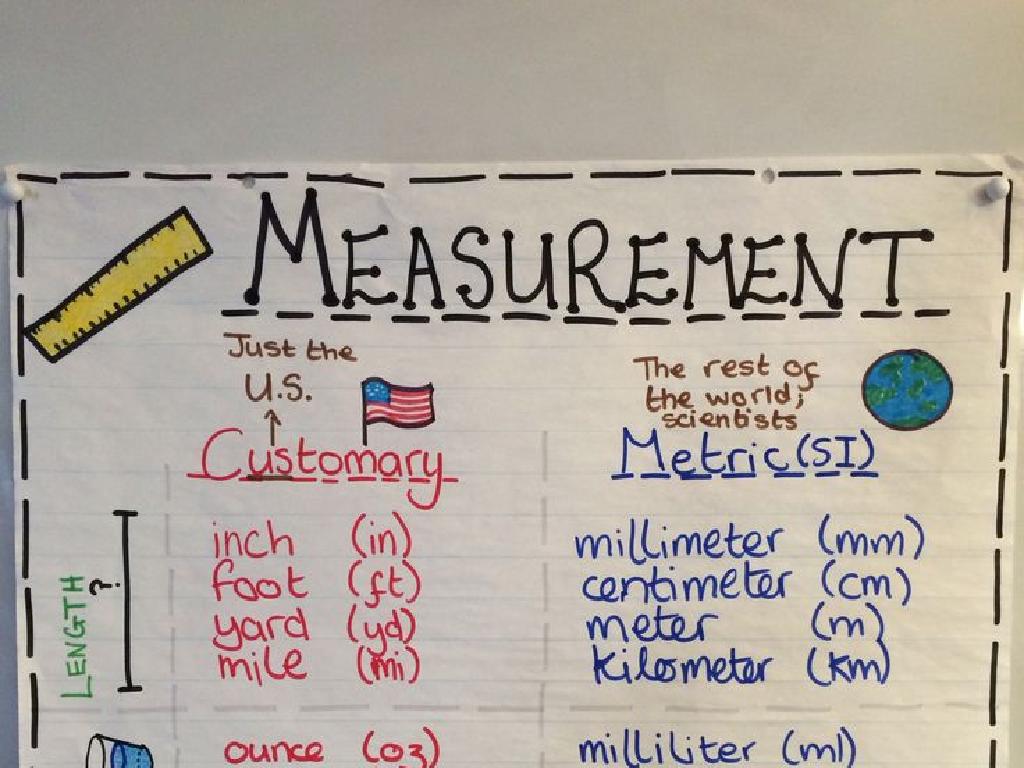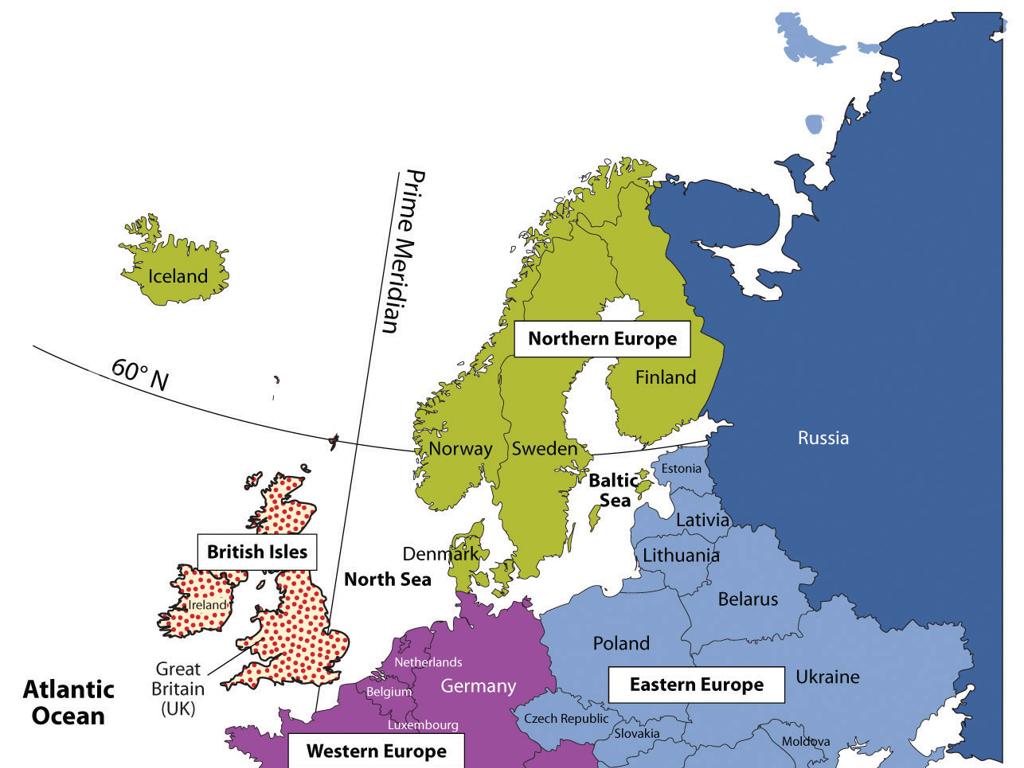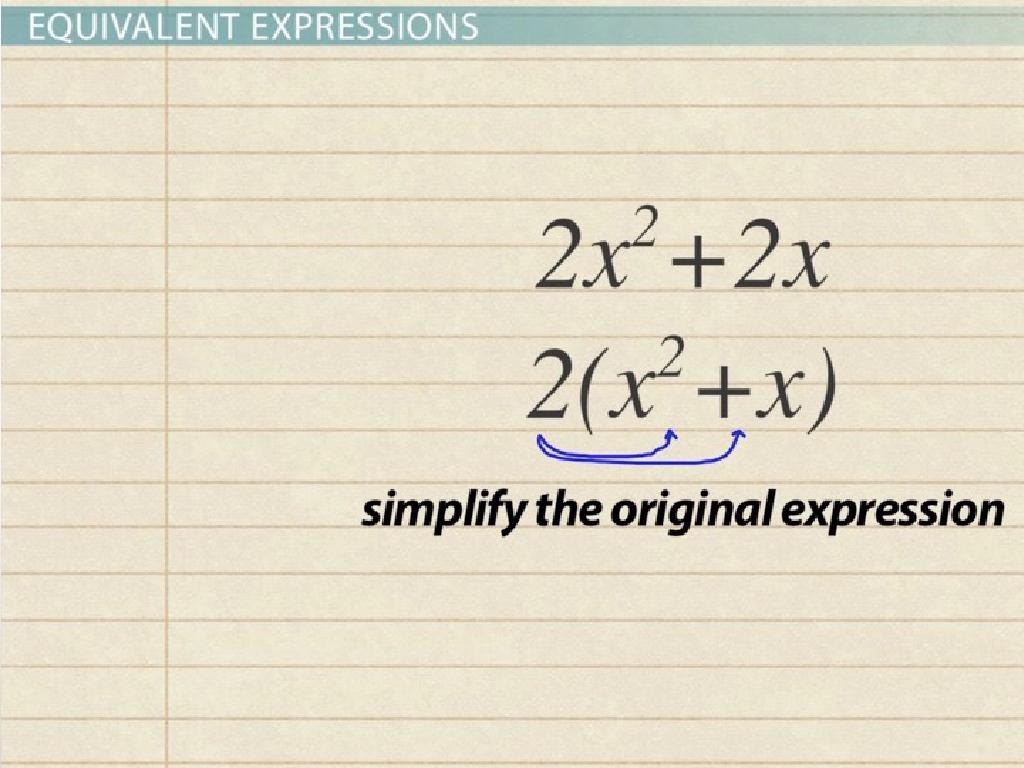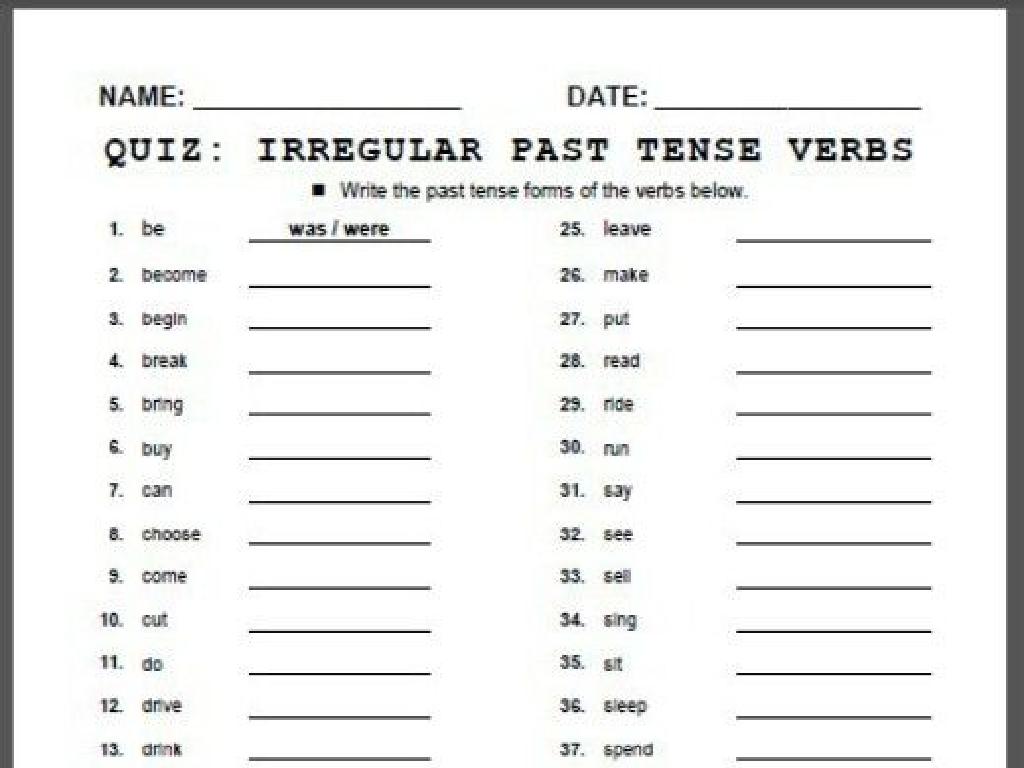Form And Use Irregular Plurals
Subject: Language arts
Grade: Third grade
Topic: Nouns
Please LOG IN to download the presentation. Access is available to registered users only.
View More Content
Exploring Nouns: Irregular Plurals
– What are nouns?
– Types of nouns: people, places, things, ideas
– Today’s lesson: Irregular Plurals
– Some plurals change the word completely, like ‘mouse’ to ‘mice’.
– Not all plurals end with ‘s’
– Examples: ‘child’ to ‘children’, ‘foot’ to ‘feet’
|
This slide introduces the concept of nouns and focuses on irregular plurals, which are plurals that do not follow the standard rule of simply adding ‘s’ or ‘es’ at the end of the word. Begin by explaining what nouns are and give examples of each type. Then, transition to the main topic of irregular plurals. Provide examples of irregular plurals and explain that these do not follow the usual pattern and must be memorized. Engage the class by asking them to think of nouns they already know and then guide them to discover the irregular plural forms. This will set the foundation for more in-depth activities and discussions on irregular plurals in subsequent lessons.
Regular vs. Irregular Plurals
– Most nouns add ‘s’ or ‘es’
– Irregular plurals are unique
– They don’t follow normal rules
– Examples: Child – Children
– ‘Child’ becomes ‘Children’, not ‘Childs’
– Examples: Mouse – Mice
– ‘Mouse’ turns into ‘Mice’, not ‘Mouses’
|
This slide introduces the concept of plural nouns, focusing on the difference between regular and irregular plurals. Regular plurals typically just add an ‘s’ or ‘es’ at the end of the word, which is a straightforward rule for students to remember. However, irregular plurals change the word in a unique way that doesn’t follow the typical pattern. Provide examples like ‘child’ becoming ‘children’ and ‘mouse’ turning into ‘mice’ to illustrate this concept. Encourage students to think of other irregular plurals and discuss why they are different. This will help them understand that while many words in English follow rules, there are always exceptions that need to be memorized.
Exploring Irregular Plurals
– Spelling changes in plurals
– ‘Man’ becomes ‘men’, not ‘mans’
– Some plurals stay the same
– ‘Sheep’ is both singular and plural
– Examples of irregular plurals
– ‘Child’ to ‘children’, ‘mouse’ to ‘mice’
– Practice with fun activities
|
This slide introduces the concept of irregular plurals to third-grade students. Start by explaining that unlike regular nouns that just add an ‘s’ or ‘es’ to become plural, irregular plurals change in different ways. Some change their spelling entirely, like ‘tooth’ to ‘teeth’. Others don’t change at all when they are plural, such as ‘deer’ or ‘fish’ which can be singular or plural. Provide clear examples on the board and encourage students to come up with more examples as a class. Finish with a fun activity where students find and share irregular plurals from their favorite books or stories, reinforcing their understanding through application.
Irregular Plurals in Sentences
– Understanding irregular plurals
– Plurals that don’t follow regular rules
– ‘I saw two mice’ explained
– ‘Mouse’ becomes ‘mice’, not ‘mouses’
– Create your own sentences
– Share sentences with the class
– Practice using irregular plurals in speech
|
This slide aims to teach students about irregular plurals through examples and practice. Begin by explaining that irregular plurals are words that don’t follow the typical ‘add an s’ rule for making plurals. Use the example ‘I saw two mice’ to illustrate how the word ‘mouse’ changes to ‘mice’ instead of ‘mouses’. Encourage students to think of other irregular plurals and use them in their own sentences. This activity will help them understand the concept and remember the irregular forms. Have students share their sentences with the class to reinforce their learning and to correct any misconceptions. Provide guidance and praise as they work through these examples.
Activity Time: Plural Scavenger Hunt
– Find objects in the classroom
– Write singular and plural forms
– For example, ‘child’ becomes ‘children’
– Share with the class!
– Learn about irregular plurals
– Understand that not all plurals end with ‘s’
|
This activity is designed to help students recognize and form irregular plurals in a fun and interactive way. Have the students walk around the classroom to find various objects that they can pluralize. Remind them that irregular plurals do not follow the typical ‘add an s’ rule. For instance, ‘man’ becomes ‘men’ and ‘mouse’ becomes ‘mice’. After they write down the singular and plural forms, ask them to share their findings with the class. This will reinforce their learning and allow them to learn from each other. As a teacher, prepare a list of common irregular plural nouns to assist students who may struggle to find examples. Encourage creativity and praise their efforts to foster a positive learning environment.
Class Activity: Create Your Plural Book
– Make a booklet of irregular plurals
– Include pictures with singular & plural forms
– Find or draw a mouse, then add mice. Do the same for other irregular nouns.
– Write singular and plural words
– For ‘child’, write ‘children’ as its plural form.
– Share your booklet with the class
|
This activity is designed to help students understand and use irregular plurals in a fun and interactive way. Provide students with booklets or sheets of paper to create their own ‘Plural Book.’ They should search for images or draw pictures representing singular nouns and then write the corresponding irregular plural forms. Encourage creativity in their representation of the words. Once completed, students will present their booklets to the class, which will reinforce their learning and improve their speaking skills. Possible words include child/children, mouse/mice, tooth/teeth, foot/feet, and man/men. This activity will help solidify their understanding of irregular plural forms.
Review and Practice: Irregular Plurals
– Review irregular plural rules
– Some plurals don’t end with ‘s’ like ‘children’ or ‘feet’
– Complete the worksheet in class
– We’ll work through examples together
– Get ready for a quiz game
– Study for a game on irregular plurals
– Have fun learning!
|
This slide is aimed at reinforcing the students’ understanding of irregular plurals. Start by revisiting the rules for forming irregular plurals, emphasizing that not all plurals are made by simply adding ‘s’ or ‘es’. Use examples like ‘man’ to ‘men’ and ‘mouse’ to ‘mice’ to illustrate the concept. Hand out a practice worksheet and go through it as a class to provide immediate feedback and support. Finally, build excitement for the next class by mentioning a quiz game, which will serve as a fun way to assess their understanding of the topic. Make sure to encourage participation and praise effort to maintain a positive learning environment.
Irregular Plurals: Homework Challenge
– Congrats on learning irregular plurals!
– Find 5 objects with irregular plurals
– Objects like ‘child’ or ‘tooth’
– Write their irregular plural forms
– ‘Children’ and ‘teeth’ are examples
– Share your findings next class
|
This slide wraps up the lesson on irregular plurals and assigns a practical homework task. Students are encouraged to find everyday objects that have irregular plural forms, such as ‘mouse’ becoming ‘mice’. This exercise will help reinforce their understanding by applying it to their immediate environment. In the next class, students will have the opportunity to share their findings, allowing them to learn from each other and discuss any challenges they encountered. The teacher should remind students that irregular plurals do not follow the standard ‘add an s’ rule and provide a few examples to get them started.


/convergence_divergence_history.png)



